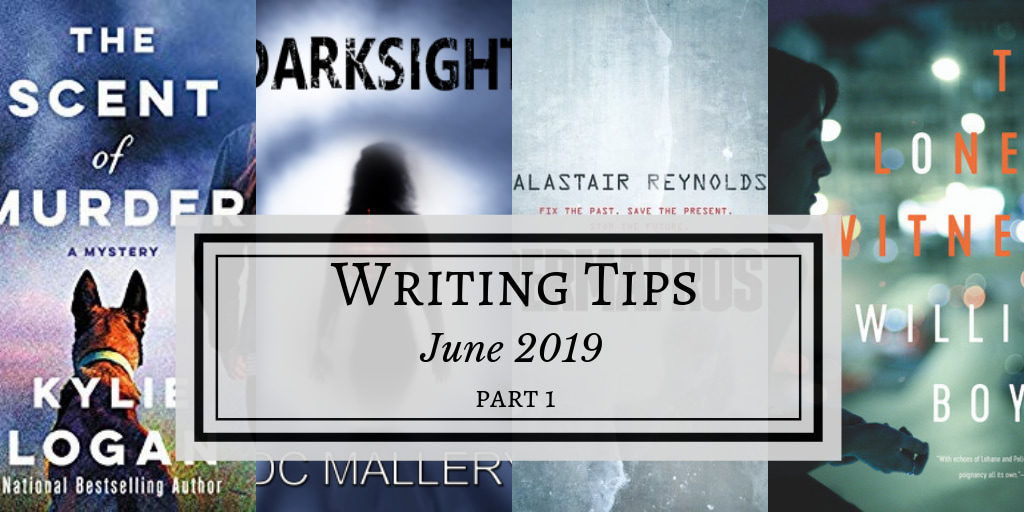
Setting & World-building
Writing Tip #1. Make that setting work for the story.
(from William Boyle’s The Lonely Witness)
I noted this in my review of Stephen Mack Jones’ Lives Laid Away. Setting can become a character in itself. Make it come alive. Make it work for the story and shape its characters.
What Jones did for Detroit, Boyle does for Brooklyn. (Note that both authors have lived or currently live in those cities.) Here, the despair and brokenness of this Brooklyn neighborhood feels so real, I felt like I was walking down those trash-littered streets with Amy. Alessandra was from this neighborhood; when she briefly returns, she realizes her presence here is a mistake. She feels herself becoming the old Alessandra and feels trapped, both by it and (I think) by Amy’s desperate need for something.
Boyle writes, “The avenue is crowded and alive, but it seems to be dying at the same time” (page 33). That contradiction fills the pages as the setting reflects and expands upon the complexities of the characters and story. Amy and the other characters often show a similar contradictions. Longing for a chance at redemption but unable to give it to others. Needing a sense of purpose (even if it’s just to supply batteries for a Walkman!) but uncertain what purpose their lives hold.
(The battery guy is Amy’s landlord, who tries very, very hard to be helpful. And fails.)
Letting a setting be generic, run-of-the-mill city/small town/etc. is a lost opportunity. So don’t waste it. Boyle is fond of longish passages of details, but they aren’t superfluous details. Each one feels hand-picked to create the mood and recreate this setting.
Plus, he hits all the senses: taste, touch, smell, sight, hearing. A few examples:
- “Chicken and duck carcasses hang in the windows of Chinese restaurants” (33)
- “Garbage is ribboned around telephone poles” (33)
- “A small garden out front with a statue of St. Francis of Assisi and a line of withered tomato plants” (17)
Vivid, right? You don’t have to have long descriptions, just relevant ones.
Writing Tip #2. Make the fantastical believable
(from Darksight, by D. C. Mallery)
Have an incredible unbelievable fantastical element you need the readers to believe? Build a solid basis for belief.
Mallery does this well. I highlighted the first aspect of this already in the review, but there’s a second aspect.
First, in the opening chapters, Jenson explains the concepts of cortical blindness, blindsight, and how normal sight works. He does this multiple times, actually, through a school newspaper interview and through presentations to the possible test subjects. Each time, he adds a bit more information, a bit more dimension, so we’re not overwhelmed by all the science. It all makes sense to us.
Then Mallery introduces the supernatural idea of “darksight.” But Jenson’s scientific background allows him to figure out what has happened and why. Because we’ve trusted Jenson to give us proven scientific information, we trust his explanations about darksight. They make sense.
Secondly, he gives us Audra’s perspective of what happens to her post-procedure. Through her experience, we understand that darksight (even unnamed) is different from blindsight. She doesn’t understand what is happening. Neither do we. But because we’ve grown to know and trust her and her perspective on blindsight, we believe her perspective on darksight.
It’s easier to suspend our disbelief of the darksight because he’s built a solid medical, rational basis for blindsight.
Characters
Writing tip #3. Let your characters be contradictory.
People are contradictory. We have conflicting desires or things about ourselves that don’t make sense. Amy is like this. She hates the neighborhood “but not liking it had led her to want to stay” (34). What? It’s a place to disappear, to be forgotten. Despite being intensely lonely, she wants to be forgotten. These dueling desires lead naturally to internal conflict (which is compelling!) which spills over to the external conflict, driving the story ahead.
These ideas aren’t original to me. Donald Maass’ Writing the Breakout Novel influenced me a great deal. I have the workbook, not the book. It’s a bit dog-eared now!
(Have a favorite writing craft book? Tell me about it in the comments! I’m creating a post of writing craft books, and I’d love to link to your favorites and include your comments, too.)
I’ve found the Enneagram to be helpful with personality types and figuring out in a general sense what different types of people desire and fear. I tend to get stuck inside my own head and think about what I want, rather than others. This helps me get out.
(Some folks like the Meier-Briggs type system. If that’s you, chime in with any MBTI writing-help related links!)
From the general (“desire to protect themselves and be in control of their life and destiny”), it’s easier for me to move to the specific of what that fear looks like for this character, in this story context.
Writing tip #4: Not all families have to be dysfunctional
(from The Scent of Murder by Kylie Logan)
Sure, adding tangled, horrible relationships and dark family secrets is a great way to add conflict. But there’s conflict in even healthy relationships. In The Scent of Murder, Jazz is still mourning the death of her father. While her mother is mourning also, she’s also open to having coffee (and maybe dinner, too) with a nice widower from church. Jazz feels conflicted: is this guy going to be part of their family? How does she feel about that? How should she feel about that? It’s a small (or big, depending on your perspective) conflict that’s not central to the novel, but it adds a dimension of realism and emotion to the story.
Plot
Writing tip #5: Don’t get sidetracked by unimportant plot points.
(from Permafrost by Alastair Reynolds)
Reynolds doesn’t spend much time discussing how Antti got the seeds from the Finnish seed vault. A few lines of dialogue, that’s it. This could’ve been a longer story, with Antti telling it over multiple pages. Or it could’ve been an entire plot point, with Valentina arriving into Tatiana and joining Antti in raiding the seed vault. Reynolds chooses not to do either. Why?
It’s not that important in the overall story.
It wouldn’t serve any purpose in character development. (It would be ridiculous, anyway. Tatiana’s weakened body is clearly not up for raiding anything.) It wouldn’t deepen the external conflict. (It’s not about whether or not they can get the seeds. It’s about whether they can get them to Cho.) It wouldn’t help develop the internal conflicts, either.
So here’s what I learned: evaluate those “digressions” in the plot. These are the ones that seem oh-so-necessary to explain. Do the explanations take too much time away from the main story’s conflict? Do the explanations add any depth to characterization, story, or setting? Are they necessary? If not, edit down to proper size or cut altogether. Then see if the story still makes sense.
